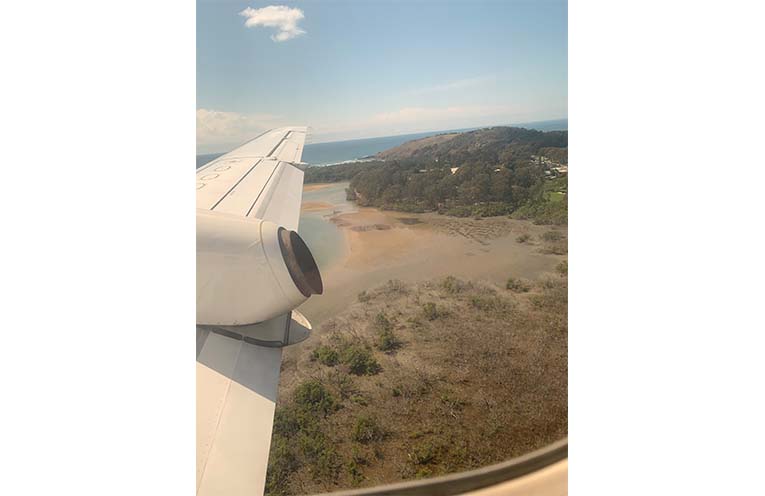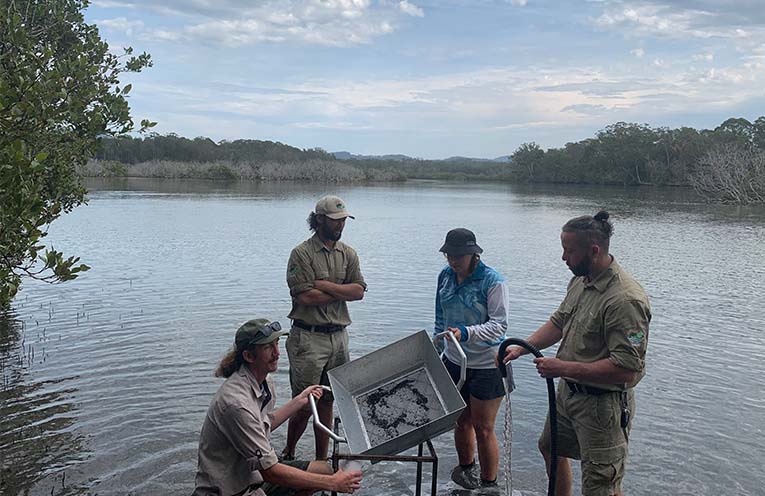
CAUTION should be taken when entering the Boambee Creek Estuary area, according to Southern Cross University’s Professor Kirsten Benkendorff.
“In particular, stay out of the dead mangrove areas where you can see pools of black mud,” she told News Of The Area.
 Advertise with News of The Area today.
Advertise with News of The Area today.It’s worth it for your business.
Message us.
Phone us – (02) 4981 8882.
Email us – media@newsofthearea.com.au
“Most importantly, don’t collect oysters,” she warned.
Professor Benkendorff was first alerted to the problem when she was flying into Coffs Harbour earlier in the year with a bird’s-eye view over the local coastline.
She was shocked to see a forest of dead mangroves as her plane approached Coffs Harbour Airport.
The mangroves are an essential part of the Boambee Creek Estuary which weaves along the southern and south-west perimeter of the airport.
“A bit of investigating on NearMaps revealed that the mangrove forest was hit hard by the hailstorm in October 2021, but two years on it had still not recovered,” said Professor Benkendorff.
“This is a worry because mangroves are really important ecosystems that provide habitat to fish, sequester carbon and help protect our shoreline.”
Professor Benkendorff joined up with the Gumbaynggirr Rangers team to investigate what was going on.
The Gumbaynggirr Rangers and their cultural work is supported by an Indigenous Protected Area Sea Country program.
Their inspection of the site revealed most of the mangroves were rotting away and the mud underneath was black and stinking.
“There was none of the usual life like crabs and snails living amongst the mangroves.
“There was a strong smell of sulphur and the occasional smell of something more like petrol,” said Professor Benkendorff.
The Ngiyambandigay Wajaarr Aboriginal Corporation received a grant from the City of Coffs Harbour (Council) Environmental Levy program to support further research.
“When Country is sick, we are also sick,” a Corporation spokesperson said.
The findings of analyses from the mangrove roots and mud, by the University’s Analytical Research Laboratory, concerned Professor Benkendorff and the Gumbaynggirr Rangers.
“We found a range of toxic chemicals in the rotting mangrove roots, including carbon disulphide and petrochemicals like naphthalene, furan, xylene and cresol.
“Many of these chemicals are neurotoxic when inhaled and irritants to the eyes, skin and lungs,” said Professor Benkendorff.
“This indicates that the site is not very safe for people or aquatic life.”
The Boambee Creek Estuary is a popular place for kayaking, walking and fishing.
The Gumbaynggirr Rangers and the Southern Cross University team are now collaborating to grow mangroves to help stabilise and restore the site.
Rob Briggs, Coordinator of the Gumbaynggirr Rangers, said they were concerned about how industry and urbanisation have encroached on significant areas of cultural value to the Gumbaynggirr people.
“We hope that through our research, we can find ways to restore harmony and heal Country,” Mr Briggs said.
“The key is to have First Nations-led solutions, and we are proud to be doing this vital work on Gumbaynggirr Country.”
By Andrea FERRARI

